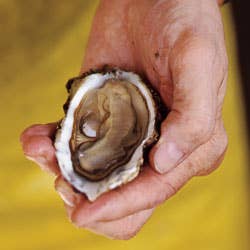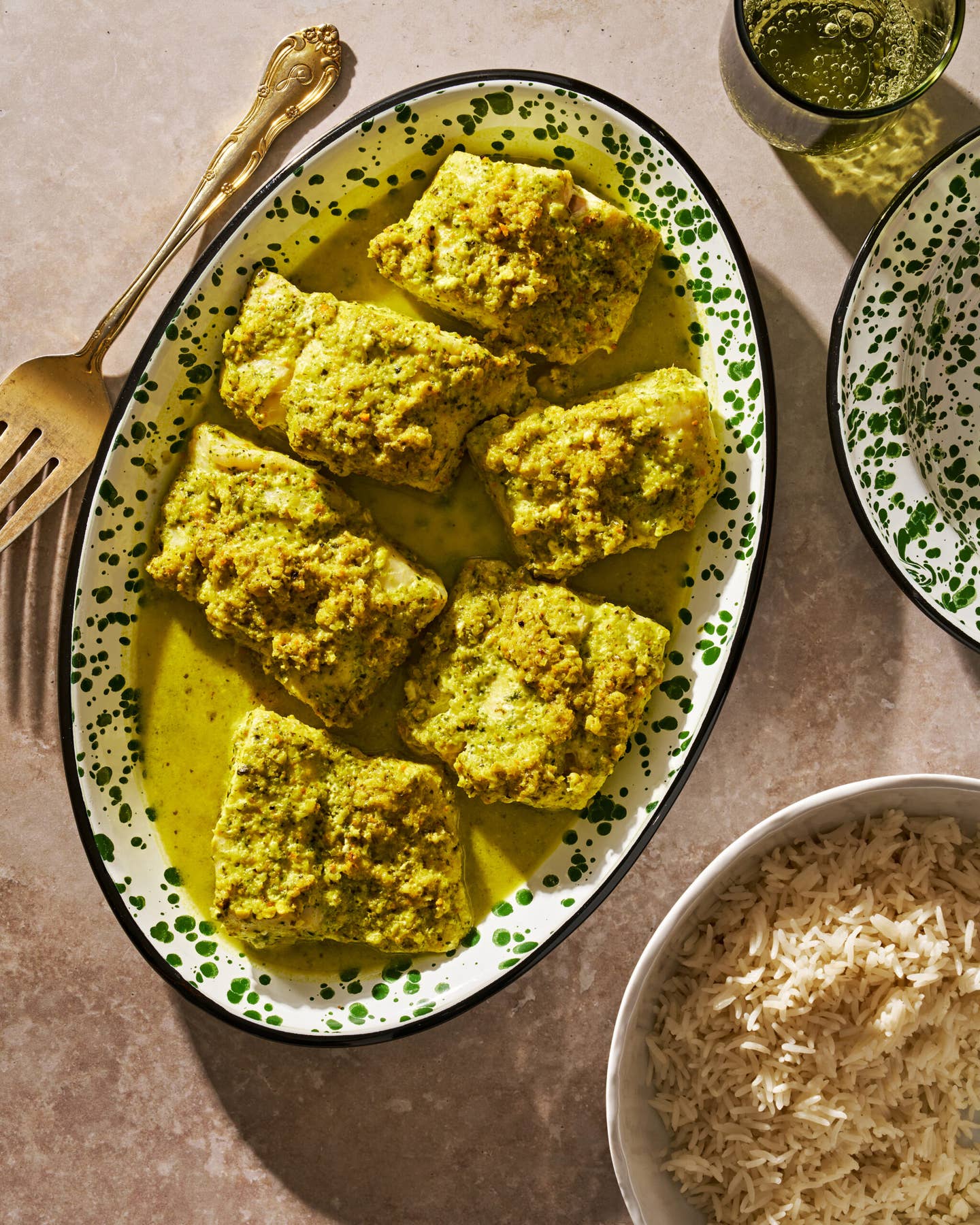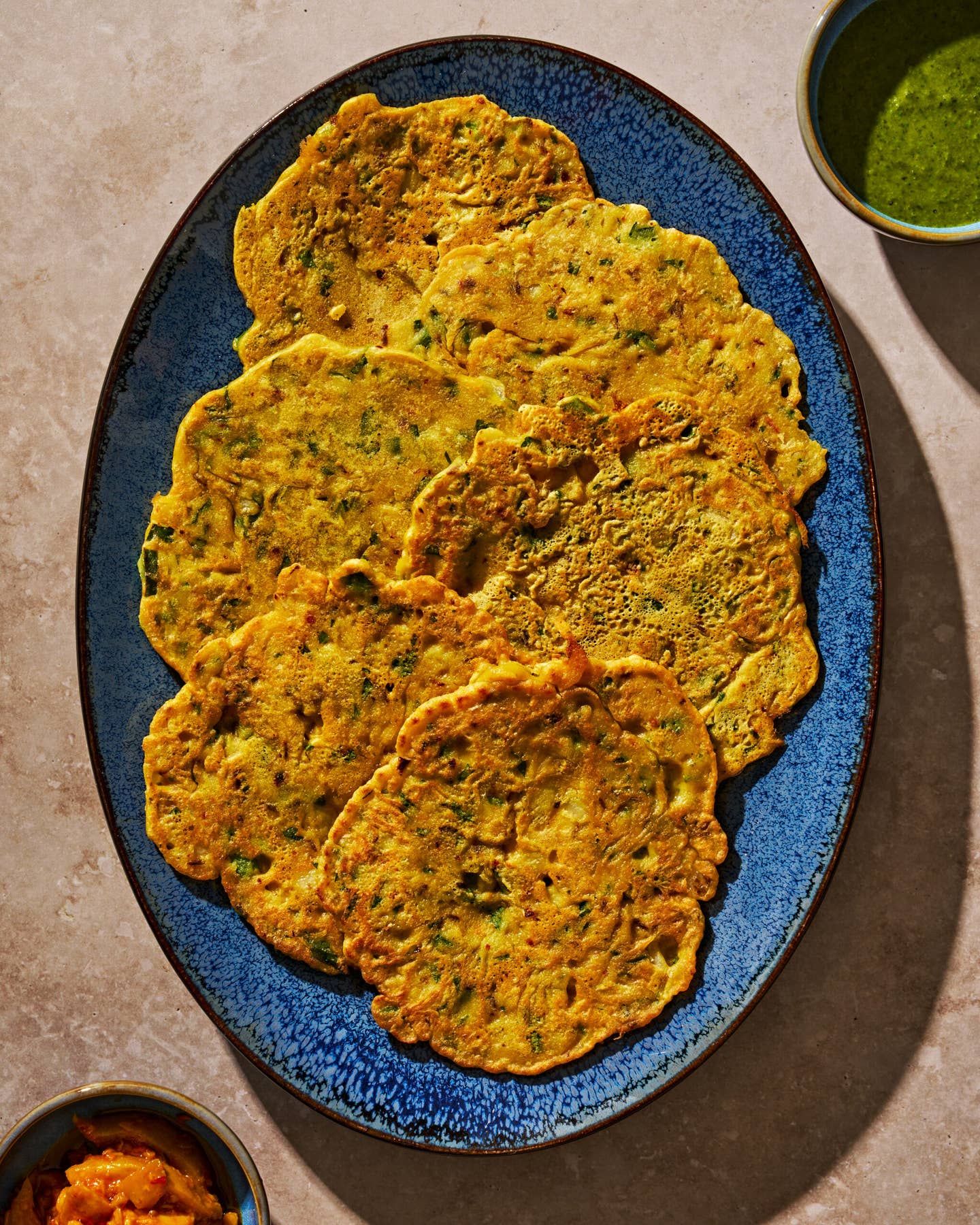
Ode to the Oyster
Bring on the bluepoints and welcome the wellfleets: it's oyster season again! Up and down the Atlantic and Pacific coasts, passionate eaters and oystermen are preparing for a new season of harvest festivals. According to Rowan Jacobsen, author of the new book A Geography of Oysters: The Connoisseur's Guide to Oyster Eating in North America, there are plenty of reasons to celebrate.
Although oysters were once a staple of the American diet (colonial settlers reputedly gorged on ten bushels a year, per capita), over the centuries overharvesting and erosion crippled wild oyster beds from Vancouver to Key West. Now, however, the tide has begun to turn. In cities from coast to coast, excellent oysters—sustainably raised by regional producers—are creeping onto menus and into diners' bellies and hearts. The result is an oyster renaissance that may be a boon to not only our taste buds but also the environment. Could there be a better reason to eat up?
The old saying goes that you should eat oysters only in months whose names contain the letter r. Is that just an old wives' tale?
The "R" rule goes back a long way, to the 1700s and maybe even earlier. Around 1762, New Haven, Connecticut, passed a law that banned oyster harvesting in months whose names didn't contain an r, and many other cities had similar regulations on the books.
Originally, the rule was meant to protect oysters, not people. Oysters spawn in the summer, so the idea was to allow them to reproduce before being eaten. Also, in those pre-refrigeration days, oysters would often be left sitting in wooden barrels in the baking sun during the the summer—and that did sometimes make people sick.
Now, though, neither of those concerns really applies. Obviously we have refrigeration; in fact, FDA rules specify that oysters need to be kept at 40 degrees basically from the time they leave the water to the moment they hit your plate. And today most of the oysters we eat are farmed oysters, many of which are triploids, which means they have three sets of chromosomes instead of two, making them essentially sexless. You can eat triploid oysters in June, July, and August and not worry that you are impacting their reproduction.
But probably the best reason to avoid most oysters in the summer is that they simply don't taste as good. In the fall, when the temperature drops, oysters get prepared for winter hibernation by packing themselves full of energy. They plump up and get sweeter and sweeter with each passing month.
Terroir is a word that's used mostly in relation to wine, not oysters, but in your book you argue that oysters reflect a sense of place just as much as, if not more than, wine. Why?
Well, oysters draw all of their flavor from their environment; they literally breathe and eat water at a rate of 50 gallons a day. Obviously, whatever is in that water is going to affect the taste of the oyster. I think of them as little lenses that concentrate everything going on in their bay or estuary and pack it into a morsel of flesh. Also, oysters_ _aren't typically manipulated much by chefs and producers; by and large, we eat them in a raw, unmediated state. That's why I'd say that oysters actually express terroir even better than most wines, since in the case of wine, while the grapes may get some of their flavor from the soil, the winemaking process introduces many other variables, like yeast and fermentation and cellaring conditions.
Most oyster lovers are very particular about their habits and rituals. What do you think is the best dressing for raw oysters: lemon, cocktail sauce, or mignonette?
James Beard called cocktail sauce the red menace, and I think he was right. You might be able to make a great homemade cocktail sauce with fresh horseradish, but most sauces are so strongly flavored and uninteresting that they'll ruin your oyster. I eat almost all my oysters raw and undressed now, unless they are really salty, in which case I might squeeze a little lemon or lime or blood orange over them, so that the acid takes away the strong salt edge. Mignonette—the classic French sauce for oysters that includes red wine vinegar, shallots, and pepper—isn't a bad idea, but I find the vinegar a little too acidic, so I usually replace it with a little citrus juice or cut it with white wine.
Are the oysters in markets and restaurants mostly wild, or are they likely to be farmed?
Almost every oyster you encounter in a market or restaurant has been farmed. There used to be oyster reefs covering the whole East Coast, but they were overfished and are all but gone now. In fact, one of the only places we still see wild oysters is in the Gulf of Mexico. Those oysters are Atlantic oysters, the same species, called the Crassostrea virginica, that is found from Prince Edward Island down through the Chesapeake to the Gulf. But because of the environmental conditions in the Gulf, most people think they don't taste as good as other Eastern oysters. M.F.K. Fisher called them "listless", and I think she hit the nail on the head. Because of the warm waters in which they live, Gulf oysters don't need to pump themselves up as much to get through the winter, so they tend to be a little small and flabby. And because the Mississippi pours fresh water into the Gulf, they tend not to be as salty as their Northern counterparts—and most people prefer the taste of a saltier oyster.
Sustainable fishing is a hot topic right now. What kind of environmental impact does oyster harvesting have on marine communities?
Historically, the impact has been huge. In the 1600s, there were enough oysters in the Chesapeake that the entire bay was filtered through them every two days. Oysters are true environmental agents and were once the keystone species for the entire estuary ecosystem along the East Coast. They created giant reefs and kept the water crystal clear, so the_ _sunlight could reach the bottom and help sea grasses grow, which was essential since sea grasses are the basis of the food chain. A lot of other marine populations crashed when the oysters began to disappear. Right now, in fact, the Chesapeake Bay Foundation has begun a huge program to bring oysters back purely for their environmental benefits.
Is there an ethical way to grow and eat oysters?
The beauty of farmed oysters is that they provide the same environmental services as wild ones. Aquaculture sounds like a bad word to most of us because we associate it with shrimp farms and fish farms that treat fish with antibiotics and dump tons of meal and grain into the water, causing algae blooms. But you don't have to feed an oyster: it eats water. Oysters actually remove nitrogen from the water, so the more we grow, the cleaner the water will actually be.
Oysters have long been considered a powerful aphrodisiac. Is there any science behind that belief or is it just superstition?
The belief in oysters as an aphrodisiac goes way back: Romans were prescribing them for impotence in the second century, and Casanova reportedly ate 50 a day. People have looked for a scientific justification, but there really are none. Zinc is cited the most often because oysters contain an incredible amount of zinc, and zinc is needed to produce testosterone. But the second_-_best edible source of zinc is liver, and no one is running around calling that an aphrodisiac.
I have my own, highly nonscientific theory, which is related to the Chinese concept of qi. Qi is the life energy that flows through all beings and dissipates when we die. Most of the food we eat has no qi, because it is dead. But since oysters are just barely dead as we eat them, they still have a lot of residual qi hanging on, and eating them is like having little qi bombs go off inside you. I don't think it necessarily turns you on sexually, but it does turn you on about life in general—and that can manifest itself in lots of ways!
Keep Reading
Continue to Next Story










